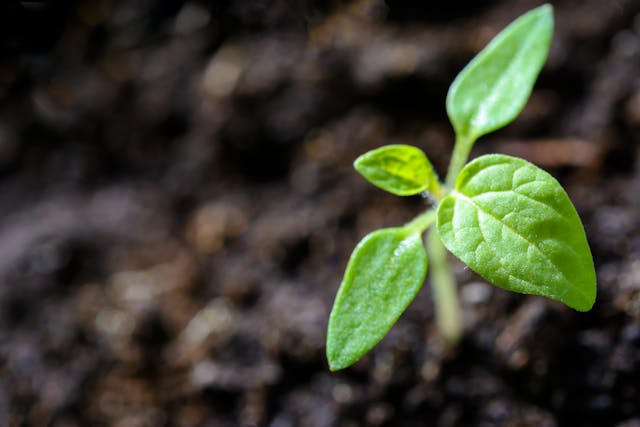
How does photosynthesis work? Photosynthesis works by taking water and carbon dioxide, then using energy from the sun to convert them into glucose through the chlorophyll in its chloroplasts.
Without photosynthesis, it is safe to say that there wouldn’t be any life on Earth. Photosynthesis is the primary source of energy among living things on Earth, and everything is based on it. There are three types of organisms on Earth. The first are autotrophs, and they make their own energy from sunlight. They don’t need other creatures to survive. Then there are heterotrophs, which get their energy from plants. The first level of heterotrophs are herbivores that eat plants directly. The plants use sunlight to make energy, and the herbivores eat the plants to get access to that energy. The second level of heterotrophs are the carnivores and omnivores that eat the herbivores to get access to the energy that the herbivores have taken from the plants. With autotrophs, there would be no heterotrophs. Without photosynthesis, there would also be no oxygen on Earth.
So, how does photosynthesis work? There are two parts to it. The first part is where the plant makes energy, which is the “photo” part, usually called the light-dependent reaction. The second part is where the plant converts carbon dioxide into glucose using the energy it just made, which is the “synthesis” part, usually called the light-independent reaction, or the Calvin Cycle. Both of these parts happen one after the other in the daylight, but the “photo” part is the only bit that needs sunlight.
In the first part of the process, plants absorb the energy from the sun that comes in the form of photons. To do this, the plant needs to absorb enough energy without damaging itself, which is why plants are green. They absorb mostly red and blue light — red has the least energy, and blue has the most — while reflecting green light, which is why they look green. This allows them to get all the energy they need, without cooking themselves. Plants need to absorb energy, and to do this they have a pigment called chlorophyll in their cells. The chlorophyll is inside the chloroplasts in the cells, and the chlorophyll molecules are in stacks that are called thylakoid membranes. When light photons hit the chlorophyll molecules, they pass over their energy, and the chlorophyll molecules start to vibrate more. That energy does three things. Firstly, it splits up molecules of water that are inside the chloroplasts. This creates hydrogen and oxygen. Secondly, it creates adenosine triphosphate (ATP), which is used to store and transfer energy. It is what we use to carry out work in our bodies. Thirdly, it creates nicotinamide adenine dinucleotide phosphate (NADPH), which allows cells to store energy.
The second part of the process is the synthesis. The thylakoid membranes are surrounded by a liquid called stroma, which contains enzymes, sugar, starch, and DNA. Carbon dioxide is needed for the synthesis process, and it comes into the leaves of the plant through tiny pores called stomata, which are usually on the bottom of the leaf to reduce water loss through evaporation. The carbon dioxide attaches to an enzyme in the stroma called Rubisco, which connects it to the sugar, making a 6-carbon compound, which then breaks into two 3-carbon molecules. The ATP and the NADPH made from the sun’s photons are now used to transform the 3-carbon molecule into another molecule called G3P, and combining two G3P molecules makes a glucose molecule. The plant can connect the glucose molecules into chains to build cell walls, grow, or make fruit sweet. When plants string glucose molecules together, they form starch, which is a carbohydrate. And herbivores eat plants to get at those carbohydrates the plants have stored, so that they can convert them back into glucose, which they also convert into carbohydrates. And then we eat the animals to get at the carbohydrates they have stored so that we can break them down into glucose, which we can then convert into carbohydrates. And then, when we die, bacteria and other insects eat us to get at our carbohydrates.
Plants are not the only living organisms that photosynthesize. A lot of bacteria photosynthesize. In fact, the reason we can live on this planet is because all of the early bacteria, about three billion years ago, photosynthesized and turned the carbon dioxide-rich atmosphere into one with oxygen.
Technology has made artificial photosynthesis possible. Solar panels convert the sun’s energy into electrical energy, which can be stored as chemical energy. It is also possible to make sugar using artificial photosynthesis, but it is nowhere near as efficient as the photosynthesis plants can do themselves. Well, they have had billions of years to evolve. And this is what I learned today.
Sources
https://education.nationalgeographic.org/resource/photosynthesis
https://en.wikipedia.org/wiki/Photosynthesis
https://education.nationalgeographic.org/resource/heterotrophs
https://www.cancer.gov/publications/dictionaries/cancer-terms/def/stroma
https://www.jic.ac.uk/blog/why-are-plants-green
https://pmc.ncbi.nlm.nih.gov/articles/PMC3982514
https://en.wikipedia.org/wiki/Artificial_photosynthesis
Photo by AS Photography: https://www.pexels.com/photo/closeup-photo-of-sprout-1002703/
